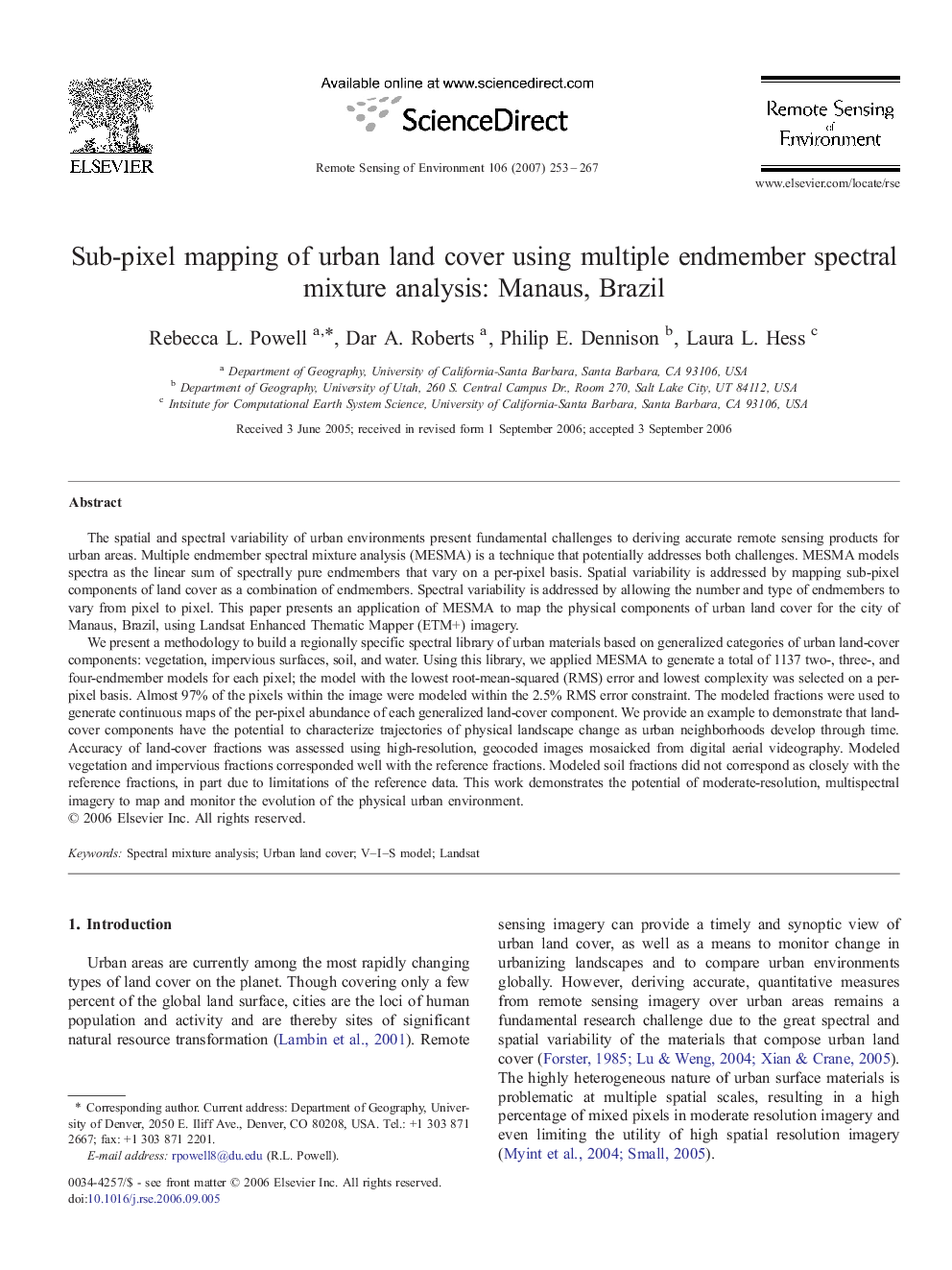| Article ID | Journal | Published Year | Pages | File Type |
|---|---|---|---|---|
| 4461001 | Remote Sensing of Environment | 2007 | 15 Pages |
The spatial and spectral variability of urban environments present fundamental challenges to deriving accurate remote sensing products for urban areas. Multiple endmember spectral mixture analysis (MESMA) is a technique that potentially addresses both challenges. MESMA models spectra as the linear sum of spectrally pure endmembers that vary on a per-pixel basis. Spatial variability is addressed by mapping sub-pixel components of land cover as a combination of endmembers. Spectral variability is addressed by allowing the number and type of endmembers to vary from pixel to pixel. This paper presents an application of MESMA to map the physical components of urban land cover for the city of Manaus, Brazil, using Landsat Enhanced Thematic Mapper (ETM+) imagery.We present a methodology to build a regionally specific spectral library of urban materials based on generalized categories of urban land-cover components: vegetation, impervious surfaces, soil, and water. Using this library, we applied MESMA to generate a total of 1137 two-, three-, and four-endmember models for each pixel; the model with the lowest root-mean-squared (RMS) error and lowest complexity was selected on a per-pixel basis. Almost 97% of the pixels within the image were modeled within the 2.5% RMS error constraint. The modeled fractions were used to generate continuous maps of the per-pixel abundance of each generalized land-cover component. We provide an example to demonstrate that land-cover components have the potential to characterize trajectories of physical landscape change as urban neighborhoods develop through time. Accuracy of land-cover fractions was assessed using high-resolution, geocoded images mosaicked from digital aerial videography. Modeled vegetation and impervious fractions corresponded well with the reference fractions. Modeled soil fractions did not correspond as closely with the reference fractions, in part due to limitations of the reference data. This work demonstrates the potential of moderate-resolution, multispectral imagery to map and monitor the evolution of the physical urban environment.
